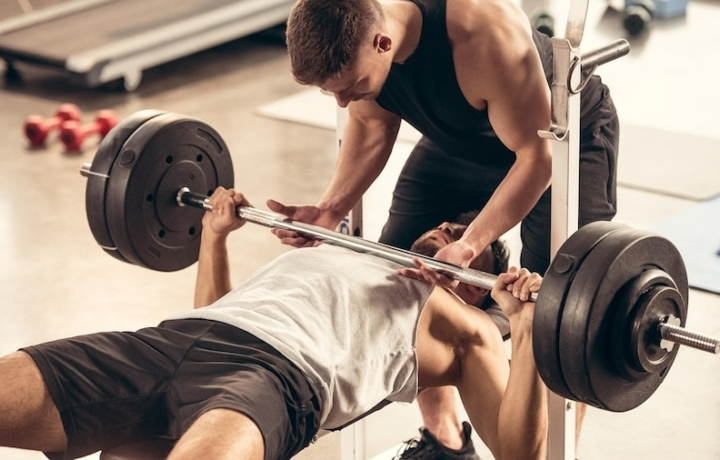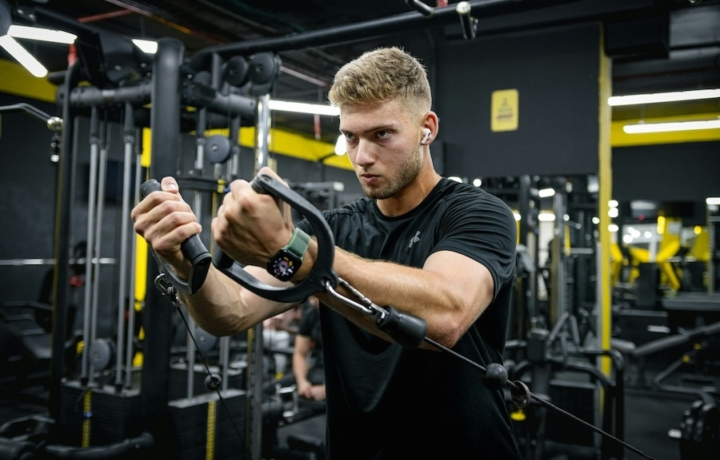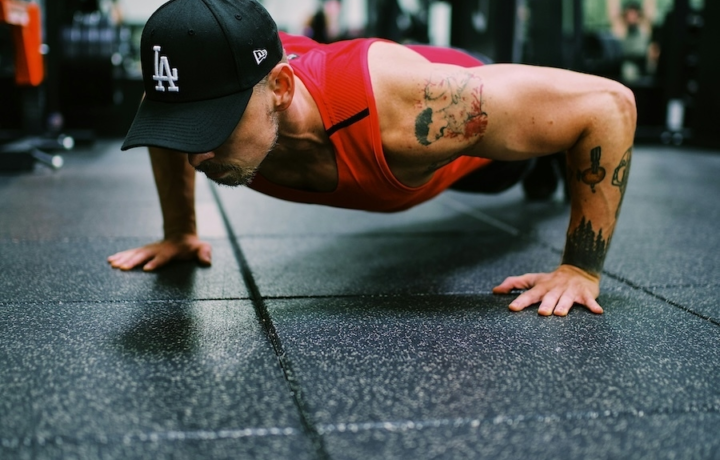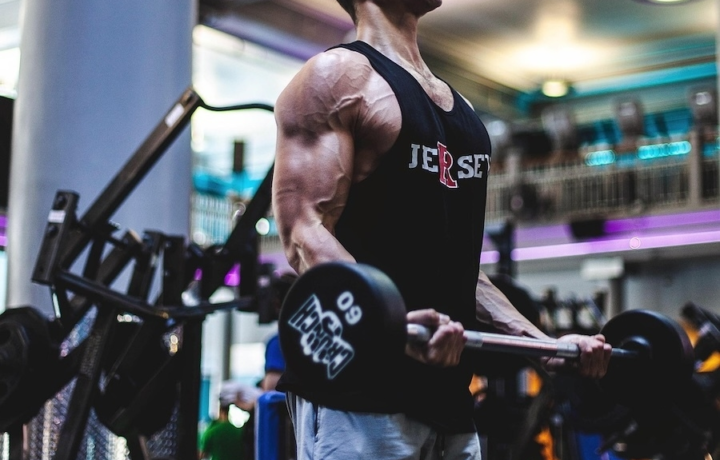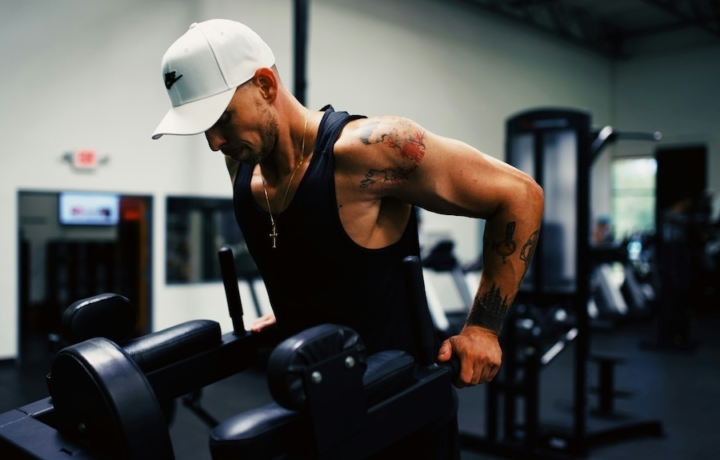Exercise
Dumbbell Incline Chest Press

Dumbbell Incline Chest Press
Calculate your one rep max
How to Perform
- Adjust the incline bench to 30-45 degrees and sit with your back firmly pressed against it, feet flat on the floor for stability.
- Pick up the dumbbells and hold them at shoulder level with palms facing forward, wrists straight and elbows pointed down toward the floor.
- Brace your core and press your shoulders back into the bench, maintaining a neutral spine position throughout the movement.
- Inhale deeply and slowly lower the dumbbells to the sides of your upper chest until your elbows form approximately a 90-degree angle.
- Pause briefly at the bottom position, keeping tension in your chest muscles while avoiding letting the weights drop too low.
- Exhale as you press the dumbbells upward, extending your arms without locking out your elbows at the top of the movement.
- Squeeze your chest muscles at the top position for a moment, keeping your shoulders down and away from your ears.
- Lower the weights with control to return to the starting position, maintaining the same path of motion for each repetition.
Important information
- Keep your feet firmly planted and maintain contact between your head, upper back, and glutes with the bench throughout the exercise.
- Avoid arching your lower back or lifting your hips off the bench, which can strain your spine and reduce chest engagement.
- Make sure the dumbbells move in a slightly arcing path rather than straight up and down to maximize chest muscle recruitment.
- If you experience shoulder pain, try using a neutral grip (palms facing each other) or reduce the incline angle of the bench.
1 Rep Max Calculator
Estimate your one-rep max for Dumbbell Incline Chest Press

Dumbbell Incline Chest Press
Calculate your one rep max
Exercise Details
Primary Muscles
Muscle Groups
Mechanic
Risk Areas
1 Rep Max Calculator
Estimate your one-rep max for Dumbbell Incline Chest Press
Built for progress
Take the guesswork out of training
Create personalized AI-powered workout plans that evolve with you. Train smarter, track every rep and keep moving forward, one workout at a time.






The Dumbbell Incline Chest Press stands as a cornerstone movement for anyone looking to develop impressive upper chest definition and strength. This intermediate-level exercise primarily targets the upper portion of the pectoralis major (pecs), while significantly engaging the anterior deltoids (front delts) and triceps as secondary muscle groups. Favored by bodybuilders for decades, the incline variation creates that coveted full chest development that flat pressing alone simply cannot achieve. The beauty of using dumbbells rather than a barbell lies in the freedom of movement they provide, allowing for a more natural range of motion that matches your unique shoulder structure and can potentially reduce joint stress.
For strength enthusiasts, the Dumbbell Incline Press offers substantial benefits beyond aesthetic appeal. The unilateral nature of the exercise exposes and addresses strength imbalances between your left and right sides, which can significantly improve your overall pressing performance across other movements. Additionally, the stabilization demands placed on your shoulder complex contribute to more functional strength that translates to everyday activities. From a bodybuilding perspective, the incline angle shifts emphasis to the upper chest fibers, creating that shelf-like appearance where the chest meets the shoulders: a hallmark of a well-developed physique.
This targeted approach helps create the complete chest development necessary for competitive bodybuilding or simply achieving a balanced, aesthetic upper body. When incorporated into a comprehensive chest routine, this movement serves as an ideal complement to flat and decline variations, ensuring complete pectoral development. The exercise responds particularly well to both higher-rep approaches for hypertrophy (8-12 reps) and lower-rep schemes for raw strength (4-6 reps), making it incredibly versatile within various training protocols. Whether your goals lean toward competitive bodybuilding or pure strength development, the Dumbbell Incline Chest Press delivers impressive results when performed consistently with proper form and appropriate loading parameters.
FAQ - Dumbbell Incline Chest Press
Set your bench between 30-45 degrees for optimal upper pectoral activation. Going steeper than 45 degrees shifts too much emphasis to the front delts, while less than 30 degrees doesn't sufficiently target the upper chest fibers.
Lower the dumbbells to the upper portion of your chest, roughly at collarbone level. This range of motion maximizes upper chest fiber recruitment while maintaining healthy shoulder positioning throughout the movement.
Avoid excessive flaring of your elbows (keep them at about 45-60 degrees from your torso), don't go too heavy too soon, and ensure your shoulder blades are retracted and stable throughout the movement. If pain persists, consider slightly decreasing the bench angle.
Include this exercise 1-2 times weekly with at least 48 hours between sessions to allow for proper recovery. If upper chest development is a priority, position it first in your chest workout when your energy levels are highest.
Dumbbells allow for a more natural range of motion that accommodates your individual shoulder structure, help identify and correct strength imbalances between sides, and require greater stabilization which can lead to improved shoulder health and function.




